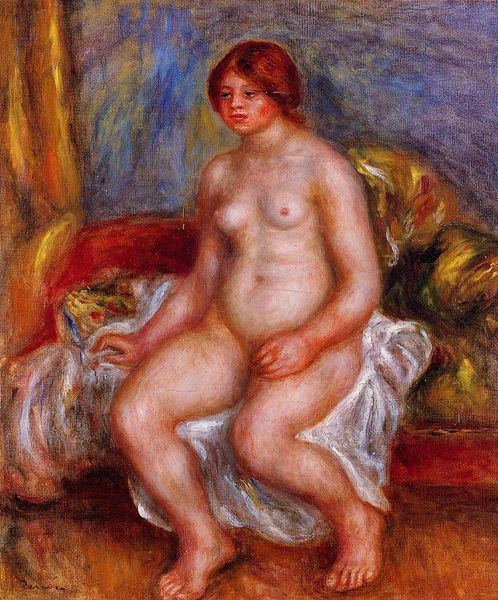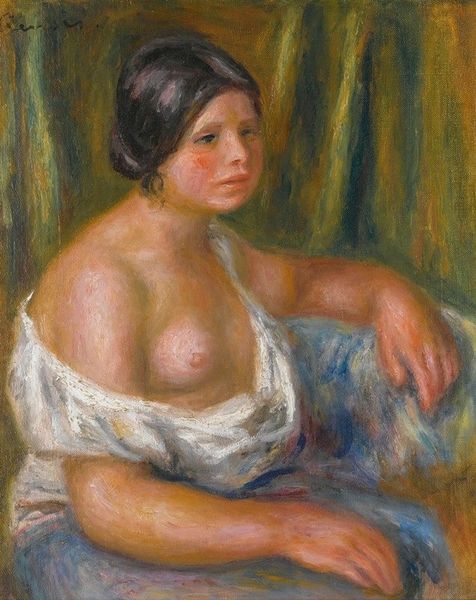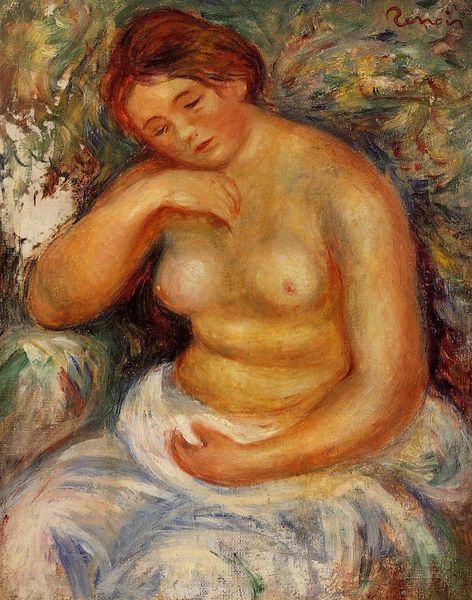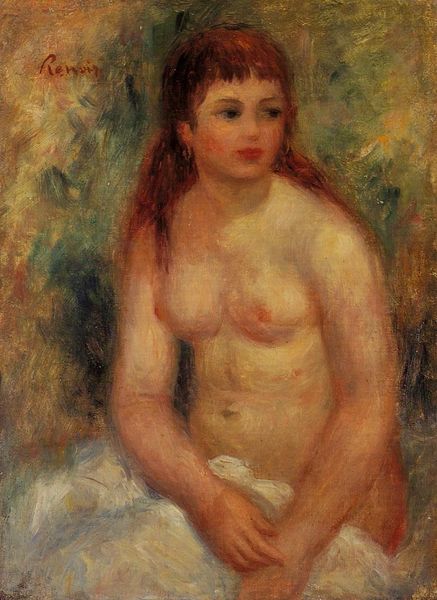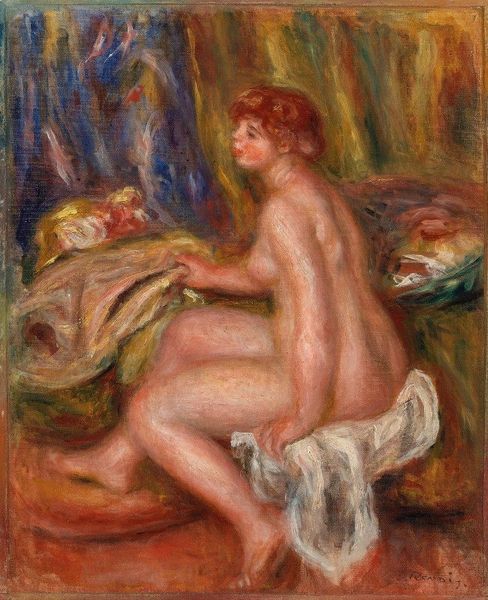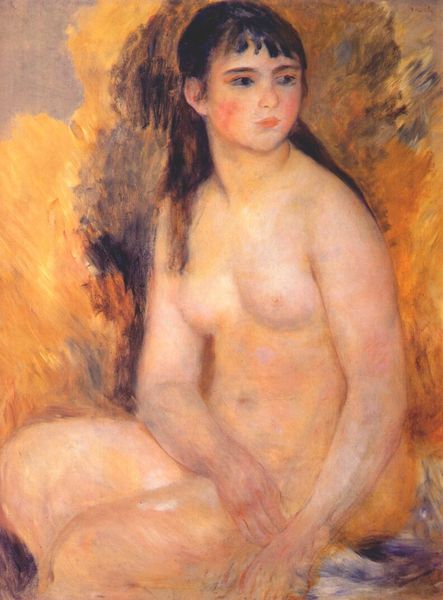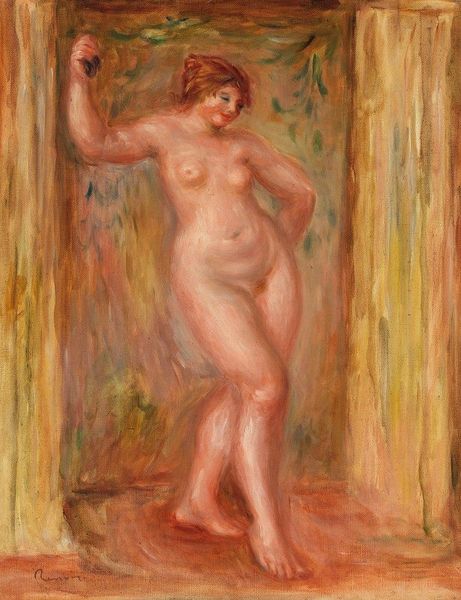
Copyright: Public Domain: Artvee
Curator: It strikes me how Renoir still embraced this genre towards the end of his career. What do you think? Editor: She's bathed in this hazy, soft light; it almost romanticizes her, don’t you think? There's a delicacy despite her size. Curator: Well, consider the timing; this is "Seated Odalisque" from 1918. World War I was raging, yet Renoir retreated to these rather idealized images, continuing with his bourgeois art production. The question arises of the sociopolitical circumstances that gave rise to the artistic creation, as well as how his lifestyle impacted it. Editor: And yet, the sheer tactile quality of that shawl – the way it drapes and folds – feels incredibly grounded in the material world. You can practically feel the weave. How important were the fabrics and textiles, as commodity, in late impressionism? Curator: Good point, absolutely fundamental! The Impressionists, and Renoir especially, were fascinated with the effects of light on different materials. I'd also argue that painting *en plein air* contributed greatly to his interest in representing such specific material properties through oil paints. Consider the art market at the time: many artists like Renoir were forced to exhibit to be able to gain public acclaim in the artworld. The Odalisque and the Nude allowed painters a socially accepted channel through which they could portray human figures. Editor: It's a complex image, really. It operates on this fine line between idealization and materiality. What lingers for me is the way this embodies pleasure and desire. Curator: Perhaps, that embodies the key concept of 'la joie de vivre', which underpinned much of Renoir's output towards the final years of his career. A celebration of life in spite of the harsh reality. Editor: It is something to consider as we move along!
Comments
No comments
Be the first to comment and join the conversation on the ultimate creative platform.
